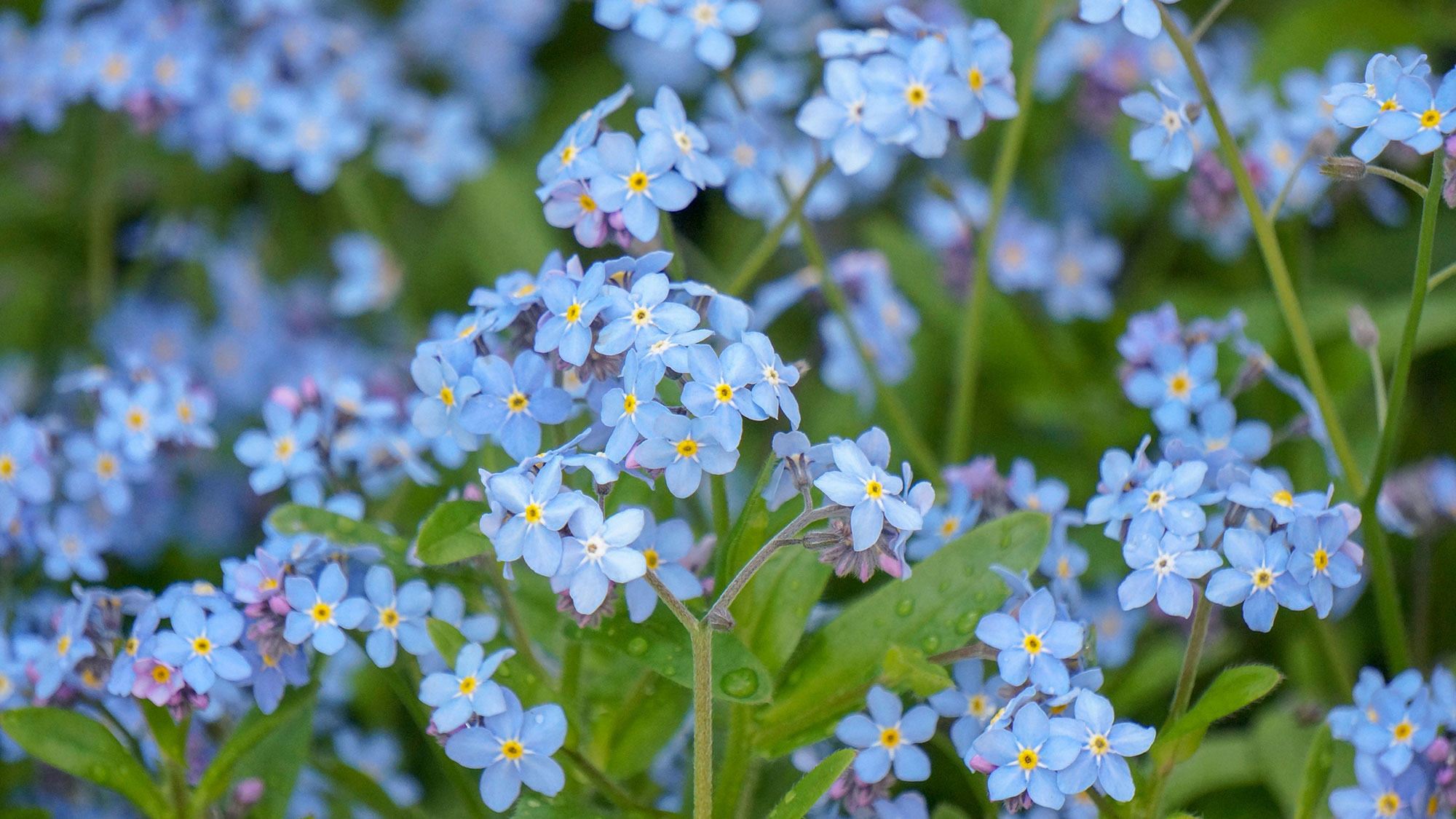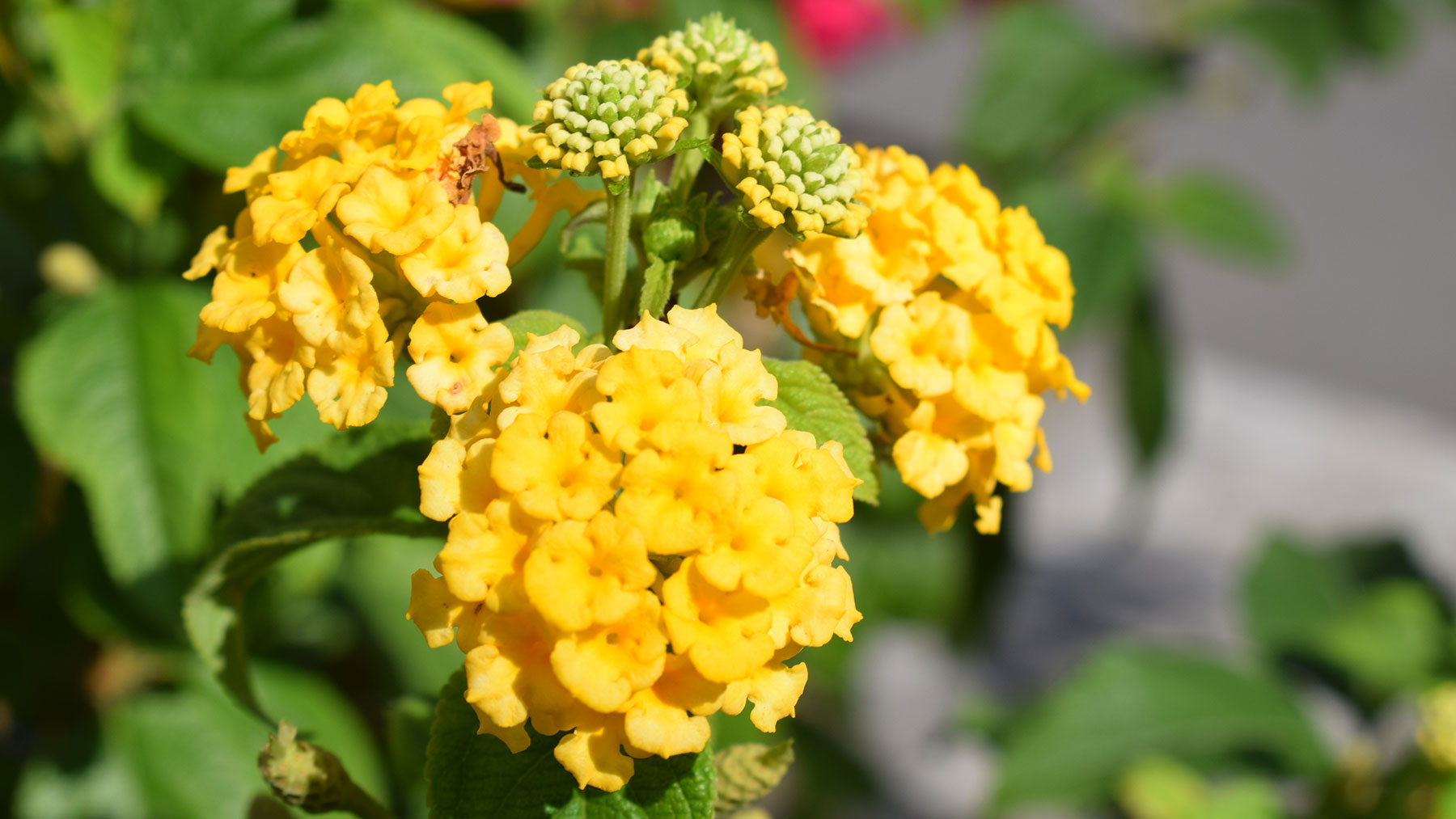9 plants you never need to deadhead —here's why you should leave them alone this summer
To deadhead or not to deadhead?

At the beginning of the growing season, gardeners busy themselves with preparing soil and sowing seeds. Then there’s the pruning and watering of the plants as they grow and bloom through the spring and summer. Once those flowers have had their moment in the sun, there’s a common gardening question to answer: to deadhead or not to deadhead?
Deadheading refers to removing the flower head from the plant, once it has finished blooming and died. This isn’t just about aesthetics — it’s a way of telling the plant to direct its energy into growing new foliage and flowers, rather than the older, dying segment. Deadheading ensures the new growth receives the best nutrients it needs to thrive and restricts wasting precious resources.
You can deadhead using the best pruning shears or simply by pinching off the stem of the wilting flower, by removing the spent bloom above the nodes of the next leaf down. It’s easy enough to do, but isn’t always necessary.
Some plants will remove their own dead flowers, so you’d be undertaking unnecessary labor if you choose to deadhead. Others rely on these flowers to spread their seed. Some plants use those seeds to feed local wildlife, so removing them would deprive fauna of their favorite treats. And some flowers simply have attractive seed pods which can still be enjoyed after the main blooms have faded. Read on to learn more about which plants should not be deadheaded and why.
Self-seeding plants
Different plants have different mechanisms for seeding and reproduction. While some plants benefit from removing the old flowers so they can target fresh shoots, others rely on these dying flowers to help them spread their seed. Sometimes this is through attracting wildlife, sometimes it’s done by the plant itself, in which case they are known as self-seeders. In these cases, removing the dead flower heads would inhibit this reproductive process. Many gardeners like to let their plants self-seed as it helps to fill in any gaps in the garden, creates a more natural aesthetic and requires less manual labor. The following three plants are all self-seeders:
1. Foxglove

Foxgloves are easily recognizable thanks to their large spikes of vibrantly hued flowers, which are tubular in shape and clustered around a central stem. The flower stalks can reach several inches in length and come in many different colors, which creates great visual impact. Some varieties will include flowers of multiple shades within a single plant, which can be very attractive. At the end of their flowering season, foxgloves will drop their seeds directly onto the soil beneath them, where they will root down and establish themselves. However, remember that foxgloves will only bloom the year after they are seeded; self-seeding is a good way to achieve a recurring crop of flowers year after year, especially if you manually plant a first and second set of plants over the first two years.
Plant zone: 4 to 9
Get instant access to breaking news, the hottest reviews, great deals and helpful tips.
2. Forget-me-nots

Forget-me-nots are beloved by many thanks to their brilliant blue color — rarely found in nature — and their sweet rounded shape. These plants produce multiple small clusters of blooms with yellow centers that can create almost a carpet effect if planted densely together. Be warned that forget-me-nots are quick to grow and are perennials, which is why they are deemed an invasive species in some areas — you may not want to allow them to self-seed if you have limited space in your garden. However, if you do let the plants self-seed at the end of the summer, you will be rewarded with that carpet-like stretch of blue and yellow. In nature, they are often found in woodlands and near marshes, rivers and bogs, because they favor wet conditions.
Planting zone: 3 to 8
3. Hollyhock

Hollyhock is an attractive flower that grows in long columns, with roundish blooms that come in a variety of colors. They are often found around countryside cottages and grow to impressive heights of up to eight feet tall. Hollyhock blooms from June through August and will produce large swaths of color once all the flowers on a column are open. After these flowers die, they will naturally spread their seeds themselves. Many people assume hollyhocks are perennials rather than biennials because of the way they are prone to pop up again year after year, but these are actually new plants that have self-seeded. If you do choose to let your hollyhock self-seed, it is recommended that you space out the original plants with a few feet between them, to create room for the next plants.
Planting zone: 3 to 8
Self-cleaning plants
Deadheading is partly just to keep things neat and tidy in the garden, but why give yourself an extra yard task if you don’t need to? Many plants have evolved to take care of their own dying flowers and will remove their unneeded blooms for you. They will even continue to bloom and produce new growth while they have these dying flowers on their stems, so you won’t notice a drop in vibrancy or health. By learning which plants fall into this category, you can save yourself valuable time and energy that you can instead devote to plants that require more care.
4. Vincas

Vincas, also known as periwinkles, are annual plants with rich green foliage and an abundance of large open flowers. They come in a range of colors and bloom throughout the summer, as long as they are grown in warm, dry conditions. When the individual flowers have reached full maturation and died, they will drop off naturally and allow new growth to emerge. This is known as “self-cleaning.” You can provide additional pruning if you’d like, to help maintain the overall shape of the plant, however you will not need to remove individual deadheads. At the end of the season, the plant will die and need to be replaced, so don’t worry about the effect on next year’s blooms; you will need to replant again in the spring regardless.
Planting zone: 2 to 11
Felco (F6) bypass pruners: was $64 now $54 @ Amazon
These high-quality, Swiss-made pruners have a hardened steel blade capable of cutting 0.8 inches of material. The smooth, red handle is ergonomically designed to provide comfort while cutting. These pruners are ideal for medium-sized hands.
5. Begonias

Begonias are another favorite of gardeners who enjoy low maintenance flowers that bloom consistently over the summer months. Begonias grow in an attractive mound, rather than sprawling or reaching great heights, so they are good candidates for borders, containers and hanging baskets. They generally retain this shape as they grow and therefore don’t require pruning, which also applies to their old flowers. Begonias will produce waves of blooms throughout the summer and naturally self-clean as they go, so you will be greeted with a consistent set of flowers without any dead ones on display. Don’t waste your time pinching off dying blooms and instead trust that the begonia will remove them for you.
Planting zone: 9 to 11
6. Lantana

Lantana is an interesting species because newer varieties have become self-cleaning, but older varieties are not. Make sure you know which plant you are buying — or which plant you have in your garden — before you give up the deadheading, but know that several varieties won’t need it. Lantana can survive as a perennial in warmer climates or grow as an annual in more moderate climates and is beloved for its colorful clusters of flowers that are often multihued. When these blooms die, self-cleaning species of lantana will drop these flowers without human intervention, although sometimes the wind plays a useful part. Lantana is popular among pollinators and prefers a lot of bright sunlight, so be sure to plant in a sunny spot in the yard.
Planting zone: 7 to 11
Plants that feed wildlife
Some wildlife species are detrimental to your garden, eating away at your plants or trampling over foliage. However, many gardeners want to encourage various fauna to the garden, whether that means attracting pollinators or appealing to birds. Birds are known for their love of seeds, which is why many people set up a bird feeder in their garden — so why not skip this step and let the birds feed directly from exposed seeds in the garden? Some plants will have the petals of their flowers fall away, exposing centers of seeds that can provide valuable nutrition (and tasty snacks) to the birds in your area. By removing the flowerheads, you remove this source of food.
7. Coneflower

Coneflowers are distinctive in their shape, with a large central seed pod surrounded by long curving petals that create a cone shape. They come in many colors and are often said to resemble daisies, due to the flower’s contrasting colors and long thin petals. Once the flower has finished blooming, the petals drop off and leave behind the center of seeds, which makes for a really great snack for birds. These will stay connected to the stalk long after the summer and should be kept in place in the garden so that the birds can visit and enjoy. The coneflowers can still look quite dramatic even in the autumn and winter, thanks to this feature.
Planting zone: 3 to 9
8. Rudbeckia

Rudbeckia is a similar plant to coneflower, with a central pod of seeds surrounded by long thin petals, although rudbeckia doesn’t curve so dramatically. It also mostly occurs in only yellow or orange, whereas coneflower comes in more vibrant colors. However, they share the value of their seed pods to local birdlife — and their ability to keep these seeds in place long after the blooms have faded. If you keep rudbeckia in the garden, let the plants stand through the colder months so that they can feed the birds with delicious seeds.
Planting zone: 3 to 9
Attractive seed pods
9. Sedum

Sedum grows as an attractive spray of closely packed, tiny flowers that grow in clusters within a larger plant. As they die off at the end of summer, the seed heads that are left behind remain in a striking shape that can still be enjoyed through the autumn. While they don’t provide a practical value to the local environment and won’t produce new plants for the year ahead, you can still get value from leaving the plant intact long after the flowers themselves have died. As a perennial, sedum will flower again the following year without needing to be replanted, so let the plant stand in place year-round and enjoy it in all its different aesthetic forms.
Planting zone: 3 to 9
More frem Tom's Guide
- Discover how to deadhead roses to keep them blooming
- And 7 mistakes everyone makes when deadheading plants
- Plus, how to deadhead hydrangeas

Despite making her home in urban metropolises, Madeleine Streets has been nurturing a green thumb for decades.
Raised by a garden designer, she is putting that childhood education to use by helping others learn how to make their garden bloom, while filling her own New York home with cat-friendly plants.
When not writing about gardening and the outdoors, Madeleine loves to cook, study wine and borrow books from her local library.

